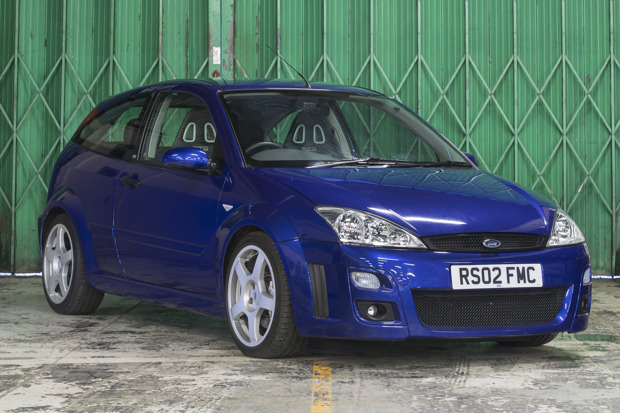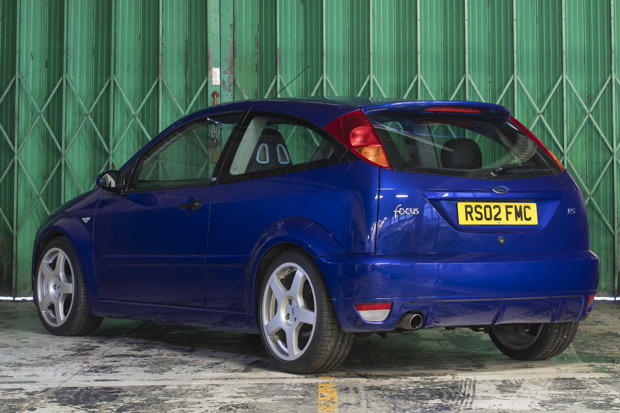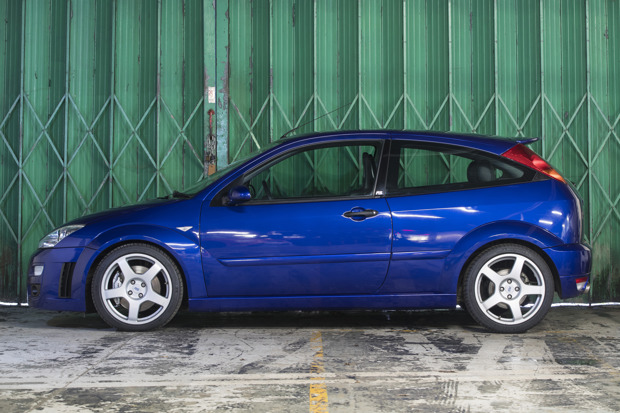A future classic? Ford Focus RS

Ford originally hinted at an RS version of the Ford Focus back when the first generation model was launched in 1998, but it was an agonising four-year wait before the homologation special finally saw the light of day.
Introduced in 2002 and based on the three-door Ford Focus shell, it came with distinctive Imperial Blue paint – the only colour option - flared wheel arches, brash OZ alloys and blue-painted Brembo callipers.
Inside, it got Sparco rally seats, blue leather on the steering wheel and exclusive blue RS dials. If you don’t like blue, it’s not the car for you.
It still retained the look of a standard Ford Focus - more or less, at least - but beneath the skin was a completely different powertrain, developed in tandem by Ford and Tickford Engineering.
The powerplant was based on the standard 2.0-litre Duratec four-pot, but with a Garrett turbocharger, forged pistons and uprated injectors, along with a wide bore exhaust and a modified cylinder head, with wider ports.
A Getrag five-speed gearbox completed the mechanical package, while the chassis work was mostly carried out by Ford’s own engineers, with stiffer, lowered springs and a faster steering rack.
In today’s terms, the power output of 212bhp might not sound all that lairy, but the power delivery was brutal above 3000rpm once the turbo spooled up.
The car was fitted with a limited-slip differential, but even with this concession, the RS’s propensity towards torque steer was immense. It was a hoot to drive quickly, but not a very refined experience. Drive one today and it's still a massive laugh.

Even better, because it’s a Ford Focus, It’s also much more practical than most cars with similar performance. You can travel four-up comfortably and it has a decent boot.
What’s more, they’re pretty durable. Cambelts only need changing every 100,000 miles and specialists all say that the Ford Focus RS is one of the most reliable performance cars there is.
The biggest thing to look out for is rust, as 20-year old Fords aren’t renowned for their rot resilience. Lucky, most have always been enthusiast-owned, which means they’re much better on the whole than your common or garden Ford Focus.
The downside to this is that, ever since it was new, demand for the Ford Focus RS has always exceeded supply. At the model’s lowest ebb a couple of years ago, you were still paying £8000 for a half-decent example. Today that figure is more like £10,000.
The RS halo, then, still shines. And while the Ford Focus RS isn’t yet a thoroughbred classic, perhaps, you only have to look at the values of Ford Escort and Ford Sierra Cosworths for a future projection.
Buy one, look after it, and at the very worst you won’t lose a penny. And as a recipe for a future classic, that’s a pretty safe investment.

Why is my classic car not tax exempt?


